Animals and Farm Locations
Introduction
The animal’s location on a farm may be useful for a number of reasons, including
field grazing, performance and general interest. There are two basic things to consider:
1.First do we want to know where a specific animal?
2.Second do we want to know where it has been?
If we want to know just where it is then setting and maintaining the animal’s location is all that is required.
If we want to know where it has been then we need grazing and housing records.
However keeping and maintaining location records can be challenging specifically if animals are moved
without any record. It may sound rather obvious but ‘knowing’ the location of an animal is only of any value if it
is actually there. For this reason the number of people keeping accurate location records is small.
An alternative is to simply use the management groups as a means of knowing where animals are.
Farm Locations
Farm locations include fields and buildings (sheds and yards). Fields are added via the main ‘Field’ menu.
All other farm locations are added via the main ‘Farm’ menu. The key thing is that both fields and locations
have a unique reference name. Fields then have the capability to record grazing records, Whilst Locations
have the capability to record housing.
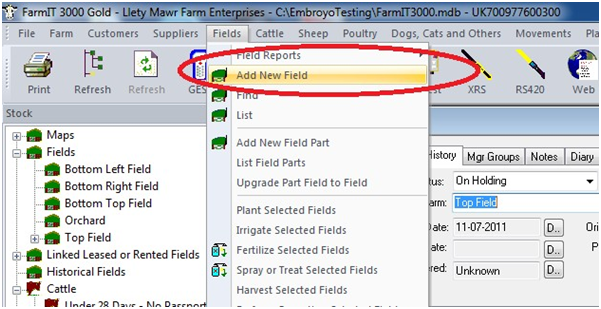
Animal Location
The animals current location is recorded on the animals movement tab of it’s record card.
It can only be in one field/location at a time. The animal’s movements within
fields/locations is recorded with the grazing and housing records.
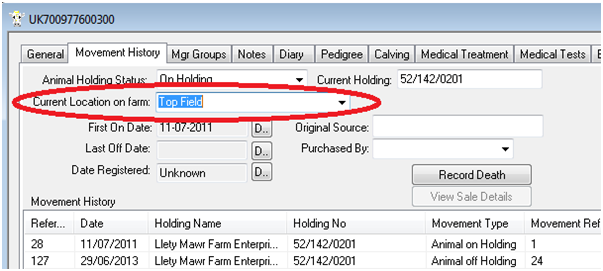
Field Grazing Records
Many of the Farm environmental schemes require a very basic grazing record. This records the number of
animals moved in or out of the field and tends to include animal type and class, for example
“Moved in 4 cattle, heifers”. They tend not to include the animals ear tag number. Within the FarmIT
3000 Software the tag number is included in order to record exactly which animals were moved in or out.
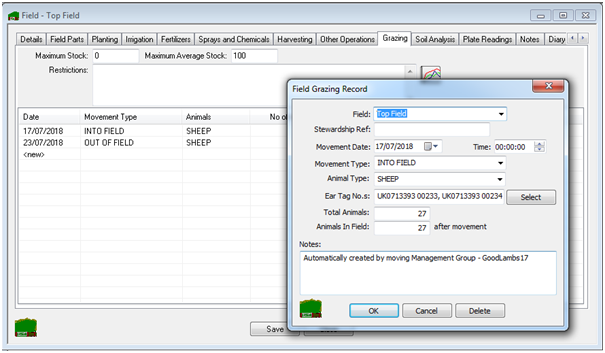
Location Housing Records
Very similar to grazing records Location Housing records the number of animals moved in or out of the field and
tends to include animal type and class, for example “Moved in 4 cattle, heifers”.
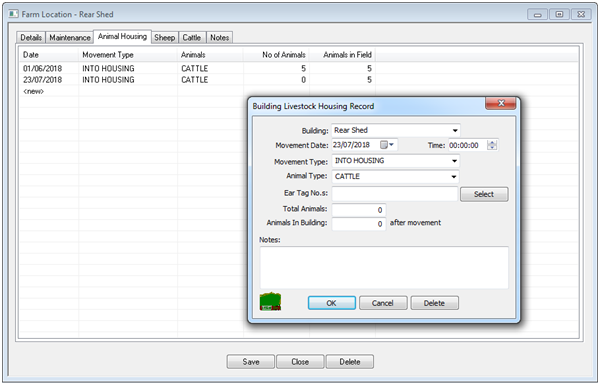
Management Groups
Setting and maintaining the location of individual animals as they move around the farm would be very time
consuming if we were to treat them as individuals. Management groups offer a much simpler approach as long
as the groups are maintained. The management group record has a ‘Track Movements’ checkbox and a ‘ Location’.
Ticking the Track Movements box, selecting a location and then saving the record results in grazing or housing
records be created automatically and the animals current location being updated. If the location was changed
from a previous location then both the ‘Moved In’ and ‘Moved Out’ record are created.
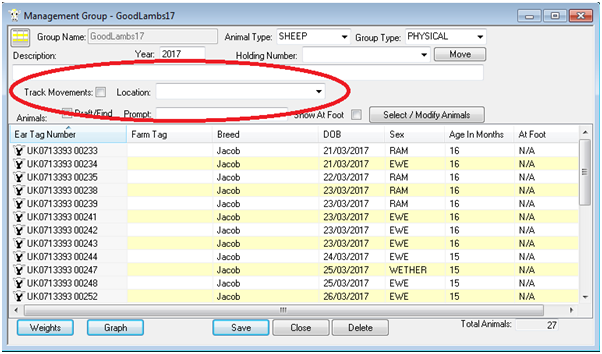
TIP!
– It may at first seem sensible to name the management group by the location for
examples‘Heifers Top Field’, however this gets rather confusing when we move the group
to another field for example the ‘Bottom Field’ , So now the group ‘Heifers Top Field’
is now in the Bottom Field. We would suggest that if you are going to move the group, give
it a generic name that does not reflect its current location
Reporting
There are a number of reports which show the ‘location’ of animals, Those for cattle are under the main
cattle/cattle reports/location menu. You may also see the location on the General Analysis screen.

Grazing and housing records are shown on the field’s individual record and the farm location record.
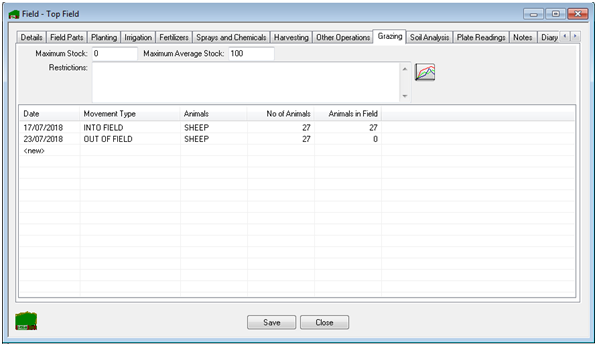
Future development within the software
We would acknowledge that keeping track of animal movements around the farm, though worthwhile
is time consuming and tends to ‘fall by the wayside’ when stockmen are busy. For this reason the
worth of grazing/housing records is limited. It is of course what we all should be doing, or at
least what our consultants tell us we should be doing.
It is further complicated if we want to see weight performance relative to grazing or housing as of
course we then want animal weights going in and on the way out. Something that may not be possible
unless the animals are returned to the cattle crush to be weighed.
For most the use of grazing records without individual tag numbers meets the requirements of environmental
management schemes and is normally only shown to the inspector should they ask the question.
It is for this reason that we have not developed the link between grazing/ house and performance or
spent money on developing better analysis and reporting in this area. We would hope to see more people
keen for us to do so.